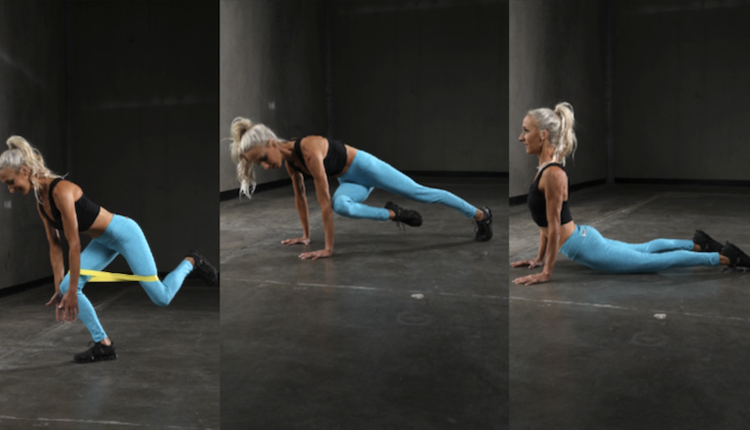
James Patrick Photography
James Patrick Photography
In part 1, we set the foundation to re-build post-rehab client tissue tolerance. Re-establishing tissue tolerance alone, however, is not enough to train movement performance. Movement performance progresses into program design part 2: expanding the movement safety zone.
Ever hear of someone stepping off a curb and breaking his/her ankle? Incidents like this are common. The body’s neuromuscular control was not responsive enough to adapt to the unusual angle, speed or load. This lagging response is often due to a lack of movement experiences — the nervous system simply doesn’t have enough training to know how to respond!
When returning to fitness post-injury, clients have been in a controlled rehab environment for some time. Fitness professionals serve a major role in restoring the breadth and depth of client’s automatic movement vocabulary through functional training. Functional training can be defined as compound exercises involving multiple muscles and joints moving in concert.
Some trainers divide functional training into categories such as push, pull, hip hinge, squat and lunge. Others divide functional training into sling systems such as posterior oblique, anterior oblique, deep longitudinal and lateral. Functional training to restore neuromuscular control, however, is not as simple as implementing neatly categorized exercises from a textbook.
Common functional training implementation mistakes include:
- Excluding movement fluency
- Introducing functional training too early
- Stopping short on speed and load progressions
Part 1: Build Movement Fluency
Functional training frameworks are only the starting point to include a variety of essential motions. Consider this: how many times has your client heard “don’t let the knee pass the toe?” What happens when that same client performs a running acceleration drill? Proper acceleration not only allows, but also requires the knee to cross forward of the toe. If the client’s first post-rehab exposure to the position is at full speed, however, injury is likely.
Instead, the client needs help with gradual exposure to multiple movement possibilities that are often not included in controlled rehab environments.
General themes from which to build movement fluency include:
- Begin with one plane, progress to multiple planes
- Begin with a stable surface, progress to an unstable surface
- Begin with a smaller motion, progress to a larger motion
- Begin with less distraction, progress to more distraction and even reaction
- Begin with simple single movements, progress to higher complexity sequences
- Begin with slower motions, progress to faster motions
- Include both open and closed chain variations
When considering so many variables, start with one theme. Next week, pick a different theme. The client must be allowed enough time to explore the theme to demonstrate at least initial competency, but not so much time that other themes are ignored. Once an individual theme has some level of competency, themes can be combined. When the client has multiple goals, movement fluency can be developed during the warm-up.
Here’s a movement fluency warm-up example for a field sport athlete returning to personal training 9 months after an ACL tear:
- Week 1 foundations: Learn a basic dynamic warm-up that incorporates all planes of motion. Begin with slow speeds and small motions. Progress to moderate speeds with medium size motions. Perform this warm-up in low-distraction area with an even floor.
- Week 2 movement expansion: Perform the same warm-up, progressing to larger expressions of each movement by the end of the warm-up.
- Week 3 speed development: Perform the week 2 warm-up, progressing to 80% of “full speed” by the end of the warm up.
- Week 4 movement expansion: Perform the week 3 warm-up, adding large complex novel movements like level changes into burpees.
- Week 5 uneven surfaces: Perform the week 4 warm-up outdoors on the grass.
- Week 6 simple reaction: Perform the week 5 warm-up with a reaction element, such as performing the burpee on your whistle.
- Week 7 sequenced reaction: Perform the week 6 warm-up with an additional sequence on your whistle. For example, when you blow the whistle, the athlete needs to do a burpee, dribble a soccer ball for a certain distance, then pick up the ball and throw it back.
- Week 8 complex reaction: Perform the week 6 warm-up, but a single whistle indicates progression into one sequence and a double whistle indicates progression into a different sequence.
Part 2: Bridge the Functional Movement Gap with Activation
When physical therapists and fitness professionals use the word “strength,” they often mean different things. Lack of awareness surrounding this difference opens the gap for functional training induced re-injury.
As an example, a physical therapist shares that a client needs to work on glute strength. The fitness professional has the clients do squats. Logically, squats work on glute strength and they help the client restore function. In line with tissue tolerance development guidelines, the trainer progresses the load. Suddenly the post-rehab client is sidelined by hip pain, back pain or a strange ripping sensation through the sacroiliac (SI) joints. What happened?
Physical therapists typically measure strength with manual muscle tests. A manual muscle test refers to isolated concentric strength against a very specific manually applied resistance. Squats are a compound exercise. Compound exercises utilize muscles in concert, as opposed to isolation. If the glutes are underactive and a client continues to increase load on a compound exercise like squats, stress shielding occurs. The underactive muscle, in this case the glutes, will allow stronger muscles like quads, hamstrings and numerous back muscles to take up their share of the load. The higher the load goes, the more the weak muscles shield themselves from participation, and the more the strong areas pick up the load in compensation. Muscles can only take up so much compensatory slack, so when the load crosses the client’s progression threshold, ligaments, cartilage or discs help too. As the non-contractile tissues substitute, they signal the problem with pain or motion loss.
What can fitness professionals do to help clients avoid functional training stress shielding?
- Follow tissue tolerance recommendations by progressing strength in isolation, and also training unloaded movement patterns in the first two return-to-training months.
- Fitness professionals can ask the physical therapist if the client has specific weak muscles on manual muscle tests. For these muscles, include an activation set prior to functional training movements. For example, if the glutes were not fully strong on manual muscle testing, the fitness professional can ask if “glutes” refers to the gluteus maximus or medius. A sample activation exercise for the gluteus maximus is the hip bridge. A sample activation exercise for the gluteus medius is a side knee plank with repeated hip abductions. Activation is not about sets x reps; in fact, 1 x 10 without an external weight is often sufficient. The secret to success with activation exercises lies in exquisite body alignment, client cueing to pre-squeeze the desired muscle prior to moving, completion of a single rep, returning to rest, then starting over. This intentional re-start from the beginning for every rep teaches the nervous system to prime the muscle to participate in the activities that follow.
Part 3: Progress Speed and Load Instead of Stopping Short
The controlled movements common in the rehabilitation environment help patients re-establish safe movement efficacy without over-stressing injured tissues. When the client is ready to develop the speed and load for fitness and athleticism, they re-enter the fitness environment. Now it is the fitness professional’s responsibility to continue bridging the gap to high level performance.
Re-establishing speed and load capacity can be accomplished through supersets. After completing the general warm-up and resistance exercise warm-up set, here is a simple formula that can be applied to almost any resistance-based exercise:
- Exercise 1: Perform the exercise with a heavy load for 6-8 reps.
- Exercise 2: Perform the same exercise (or one that emphasizes the same muscle groups) for as many reps as possible in 30 seconds.
For this round, use no more than 30% of the heavy load.
As an example for an adult recreational volleyball player returning to fitness 8 months after a rotator cuff repair:
- Exercise 1: Elbows in push-ups x 6-8 reps.
- Exercise 2: 6 lb med ball chest pass to a trampoline as many reps as possible in 30 seconds
- Perform 3 rounds with a 3-minute rest between supersets.
Tying It Together
After re-establishing tissue tolerance, post-rehab clients need fitness professionals’ help to build their movement zones of safety. After checking with a client’s rehab team on any specific needs and boundaries, the fitness professional’s inclusion of movement fluency, activation preceding functional re-integration and speed and load progression can help bridge the gap for return to high level fitness and athleticism. The rate at which the client’s capabilities are restored, depends not only on program design, but also the fitness professional’s art of cueing.
Dr. Meredith Butulis, DPT, OCS, CEP, CSCS, CPT, PES, CES, BCS, Pilates-certified, Yoga-certified, has been working in the fitness and rehabilitation fields since 1998. She is the creator of the Fitness Comeback Coaching Certification, author of the Mobility | Stability Equation series, Host of the “Fitness Comeback Coaching Podcast,” and Assistant Professor the State College of Florida. She shares her background to help us reflect on our professional fitness practices from new perspectives that can help us all grow together in the industry. Instagram: @Dr.MeredithButulis.



















